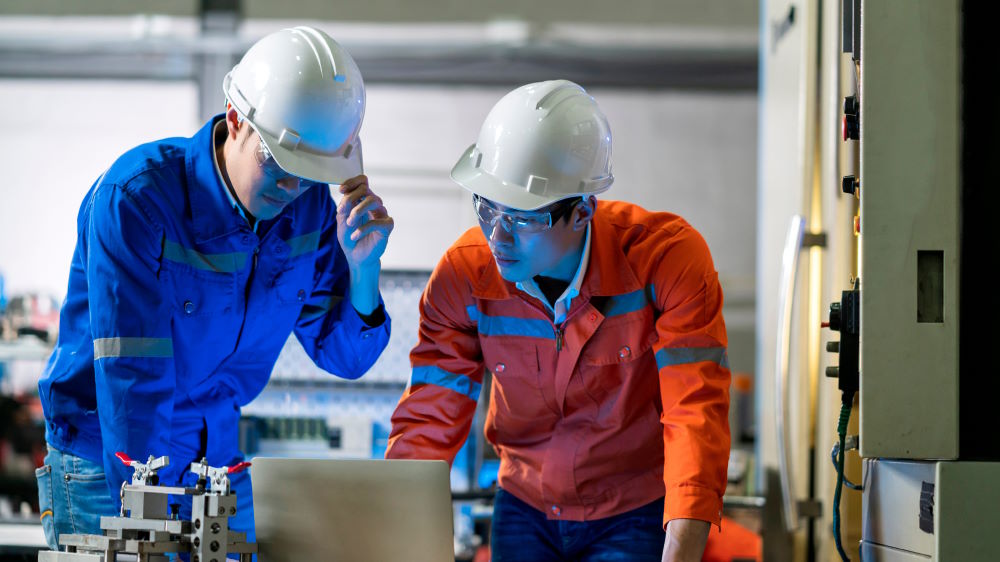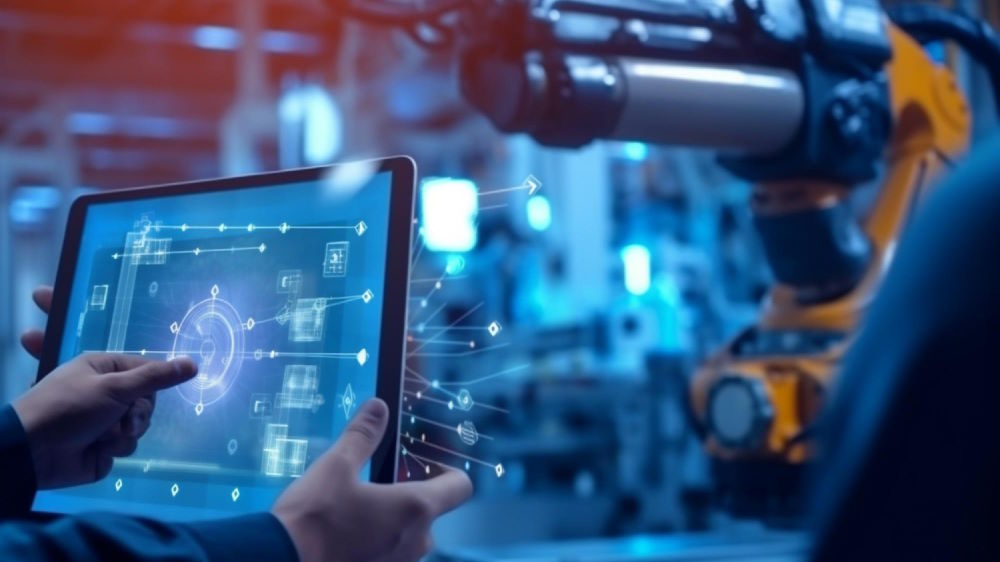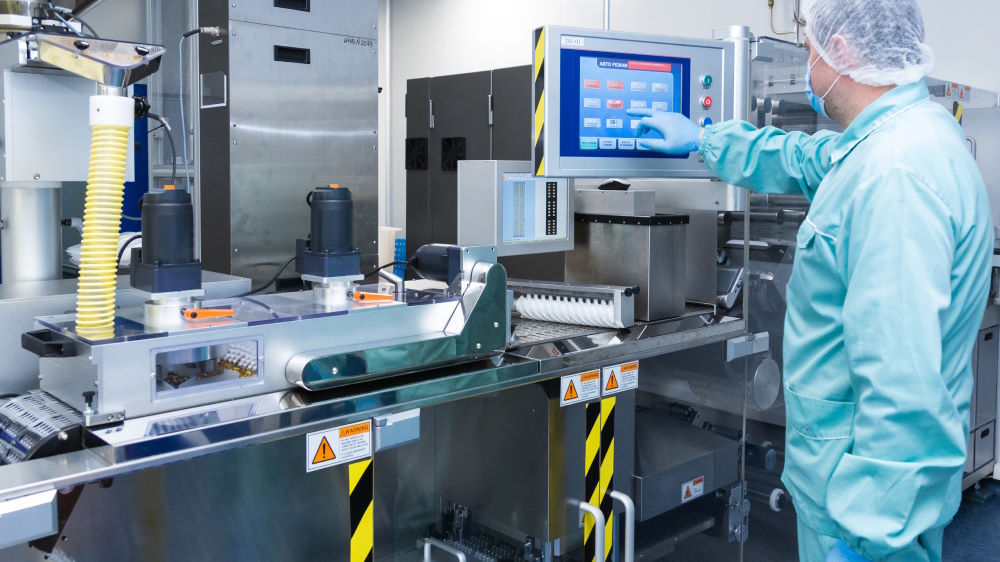Keeping Up with Technological Advances in Manufacturing

Content Map
More chaptersThe original Industrial Revolution in 1765 was propelled by steam and gas. The Second Industrial Revolution in 1870 centered around the discovery of electricity. In 1969, the Third Industrial Revolution was powered by preliminary automation, electronics, and nuclear. The Fourth Industrial Revolution (Industry 4.0) occurred after 2000 and revolved around cyber-physical systems.
Industry 4.0 is all about manufacturing digitization. Built on the Third Industrial Revolution that brought about electronics, the Internet, and intelligent computers, McKinsey reported that Industry 4.0 had created four key types of disruptive technologies:
- Connectivity, Data, and Computational Power: Cloud Technology, Internet, Blockchain, Sensors
- Analytics and Intelligence: Advanced Analytics, Machine Learning, Artificial Intelligence.
- Human-machine interaction: Virtual Reality (VR), Augmented Reality (AR), Robotics and Automation, Autonomous Guided Vehicles.
- Advanced Engineering: Additive Manufacturing (3-D printing), Renewable Energy, Nanoparticles.
Manufacturing technologies are slowly but surely transforming the modern factory environment. This article will help you catch up with all the must-know technology in the industry in order to stay ahead of the competition.
The Role of Technology in the Manufacturing Industry

Manufacturing technology is here to reshape the entire industry. But in what way are the new technologies achieving this?
The role of advanced manufacturing technologies can be divided into two different types based on the features of the process technology.
Process Technology That Enables the Production of Any of the Other Advanced Technologies
This typically pertains to the tools, machinery, and methods used in production to create particular materials and parts. This involves tools and processes for material removal, e.g., laser cutting and material forming processes and equipment, e.g., hydroforming, etc.
Robotics-Based, Automation-Based, Or Computer-Based Manufacturing Process Technology
This includes measurement, control, and testing equipment for machines, machine tools, and various fields of automated or information technology-based manufacturing. Examples include design and production software like Computer-Aided Design (CAD) and automated systems and cells like assembly systems.
Benefits of Manufacturing Technology

Many business owners are hesitant when it comes to technology investments. After all, change is not easy and sometimes downright uncomfortable. Even so, the benefits outweigh any of the potential challenges that you might encounter.
Predictive Maintenance
Unplanned downtime can cost businesses more than $300,000 per hour. With reliable equipment and a strong maintenance management framework, operators wouldn’t have to worry about such massive losses anymore. Manufacturing emerging technologies have enabled predictive maintenance with the help of industrial sensors and connected equipment that comes with complex data analysis to quickly spot operational anomalies and equipment defects. Predictive maintenance, on average, cuts maintenance costs by 25%, decreases breakdowns by 70%, and boosts productivity by 25%.
Safer Workplaces
There are certain risks when working with industrial machines. Having the option to let machinery do dangerous tasks reduces the risk of injuries significantly. Moreover, technology allows operators to work remotely while having access to the machine’s real-time data and analytics.
Operational Efficiency and Flexibility
Consistency and uniformity are two of the most important characteristics of machines. Without them, it would be difficult to avoid mistakes, and the time and cost associated with correcting or replacing defective batches would be significant. Technology not only creates consistency, but it is also extremely efficient. Production processes are automated, data is collected and quickly analyzed, and any anomalies are flagged almost instantly.
Increased Innovation
Technology opens up endless potential in the manufacturing sector. Artificial Intelligence, for example, has taken the world by storm with its intelligent answers produced in only a few minutes. The continuous growth of manufacturing technology not only reshape the entire industry but also lets people bring to life things that seemed impossible in the past, e.g., 3D printing an entire building.
Technological Advances of Tech in Manufacturing

Internet Of Things (IoT)
A benefit constantly mentioned when it comes to technology in manufacturing is predictive maintenance and a flexible working environment. This is achieved largely thanks to the Internet of Things. It is essentially a factory where pieces of equipment, types of manufacturing machinery, and computers are all connected. The Industrial Internet of Things (IIoT) is a network of sensors, instruments, and self-contained devices that are linked to industrial applications over the Internet.
As mentioned earlier, the sensors allow for data to be collected and analyzed for predictive maintenance and provide insights into the entire facility’s operation. From there, business owners can make confident and informed decisions to improve the productivity and workflow of the factory. Industrial Internet of Things (IoT). In 2022, the global IoT Market size was $321,81 billion and is projected to expand at a Compound Annual Growth Rate - CAGR - of 23.2% between 2023 and 2030. The growth of the IoT market is driven by the increasing availability of low-cost processors and sensors that can deliver real-time information, as well as advances in technology.
3D Printing
3D printing, referred to as additive manufacturing, dates back to the 1980s. After its immense success in the design section, 3D printing is transforming the manufacturing industry. The technology brings to the table an array of advantages:
- Since there is no need for an entire team of operators, expert machinists, or manufacturing equipment to assemble the product, the cost is cut dramatically.
- Let’s say you want to produce a somewhat interesting-shaped product and would like to have the test product to quickly confirm the design. Traditionally, you would have to go through an entire assembly line, which also relies on mass production for efficiency. 3D printing allows you to print a single product, and if the product doesn’t meet your expectations, it is easy and cheap to start over. This also creates space for innovation without much waste.
- Less Storage Place: Unlike traditional manufacturing, you only need the manufacturing facility where the 3D printing process is happening instead of a number of storage warehouses.
Robotics
There are 3.4 million industrial robots in the world, and the number has nearly tripled since 2011. A report by Robotiq found that the manufacturing sector had an average robot density of 141 robots per 10,000 workers. This translates to one robot for every 71 workers.
These numbers only make sense since robots today have the capability to perform multiple tasks in the factory, including but not limited to material handling, picking, packing, machine loading, welding, painting, dispensing, and so on. Robots help humans work on risky activities and work with heavy industrial equipment. The results produced by robots are more efficient and consistent. In a sense, robots serve both as employees and as quality control systems.
Big Data
Data is the new oil. Big data is a large, complex data set, especially when it comes to new data sources. Big data sets are often so large that data processing software simply can’t handle them. By collecting and analyzing a vast amount of data in manufacturing firms, business owners can quickly detect anomalies, schedule preventive maintenance, manage the supply chain effectively, and gain insight into product forecasting. All in all, industrial companies are slowly transitioning into metric-based firms where data-based decisions are crucial. Big data analytics in manufacturing market size by 2028 is expected to be $19.51 billion with a compound annual growth rate of 21,60% from 2023 to 2028. The market size of Big Data Analytics in manufacturing was estimated to be 7,34 billion USD in 2023.
Artificial Intelligence (AI)
Artificial Intelligence is a technology with vast potential. More than generating answers to questions, when pairing AI with other technologies like machine learning, big data, or robotic process automation, its implementation is beneficial to manufacturing plants. AI can mimic an engineer’s design process to generate dozens of designs at once, generate forecasts based on patterns and trends, suggest process improvements, and boost performance productivity by automating tedious processes.
Augmented Reality (AR)
With augmented reality, you can view the virtual world and the real world simultaneously, as AR overlays virtual images into the real world. Even though AR is widely associated with the entertainment industry, it has been utilized in the manufacturing sector. Operators may use AR to train and upskill workers in a safe environment. Trainees will understand how the task is carried out and the risks associated while AR simulates the operation of complex machinery. Another use case of AR is remote customers remotely. Using AR technology, the operator can guide a customer on how to handle a problem with great detail.
5G
A modern manufacturing plant requires strong connectivity to handle extensive data collection and analysis activities. 5G can assist with industrial automation, industrial robotics control, smart factory solutions, end-to-end tracking, remote operations, shop floor reconfiguration, simulation, real-time monitoring, machine communication, and augmented reality applications.
Cloud Computing
Cloud computing is a vital resource for the manufacturing industry. It improves coordination, reduces costs, provides better security solutions, and enables easy access to data. Its role in capturing machine environmental data and supply chain management has been expanded exponentially. With these benefits, cloud computing has become an indispensable part of the manufacturing sector.
Is Technology Manufacturing the Way of the Future?
Having machines and technology take over many of the tedious and dangerous manufacturing processes doesn’t mean they take away people’s jobs. Technology is only half of the industrial revolution equation. The Fourth Industrial Revolution also demands that workers reskill and upskill in order to meet the demands of the changing times.
Technology will reshape how manufacturing firms have traditionally operated. Therefore, instead of resisting change and making the process even more painful than necessary, it is best to embrace it, update the skills needed to stay in the curve, and stay alert to the latest technological trends. If you’re prepared to begin the process of digitizing your plant, or if you’ve started but are having trouble, get in touch with Orient Software, and we’ll help you put clever ideas and insights into practice.







